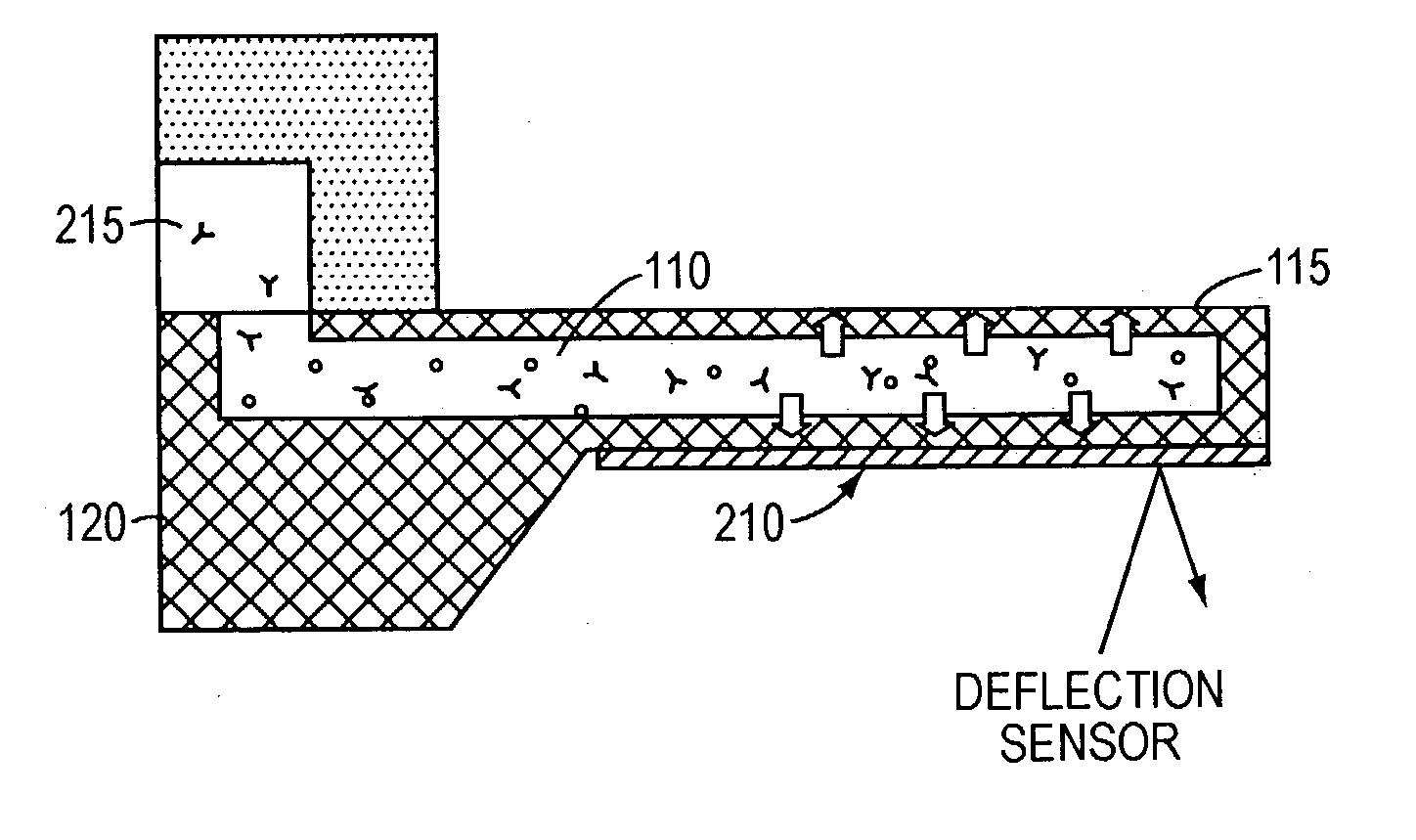Measurement of concentrations and binding energetics
a technology of concentration and binding energy, applied in the field of measuring concentration and binding energetics, can solve the problems of high labor intensity, limited rate at which these parameters are measured by current methodology, and high labor intensity, and achieves significant technical expertis
- Summary
- Abstract
- Description
- Claims
- Application Information
AI Technical Summary
Benefits of technology
Problems solved by technology
Method used
Image
Examples
Embodiment Construction
[0013] In accordance with the present invention, free-standing microfluidic channels are used to both transport and analyze molecules of interest within small (preferably nanoliter) sample volumes. In a biochemical context, such molecules may be polypeptides, nucleic acids, or other biomolecules. More generally, however, the invention is amenable to use in connection with any molecular species susceptible to capture and binding as described below.
[0014] The free-standing channels provide a real-time readout of concentration without the need for labeling with reporter molecules. The channels can also measure enthalpy values and equilibrium constants by detecting heat released from or absorbed by the sample. Detection is accomplished by transducing the mass of adsorbed analyte molecules into changes in mechanical resonant frequency and / or by transducing the heat released from chemical reactions into bending of the channel, preferably at nanometer scales.
[0015] In one aspect, therefore...
PUM
| Property | Measurement | Unit |
|---|---|---|
| volumes | aaaaa | aaaaa |
| mass resolution | aaaaa | aaaaa |
| volume | aaaaa | aaaaa |
Abstract
Description
Claims
Application Information
 Login to View More
Login to View More - R&D
- Intellectual Property
- Life Sciences
- Materials
- Tech Scout
- Unparalleled Data Quality
- Higher Quality Content
- 60% Fewer Hallucinations
Browse by: Latest US Patents, China's latest patents, Technical Efficacy Thesaurus, Application Domain, Technology Topic, Popular Technical Reports.
© 2025 PatSnap. All rights reserved.Legal|Privacy policy|Modern Slavery Act Transparency Statement|Sitemap|About US| Contact US: help@patsnap.com



